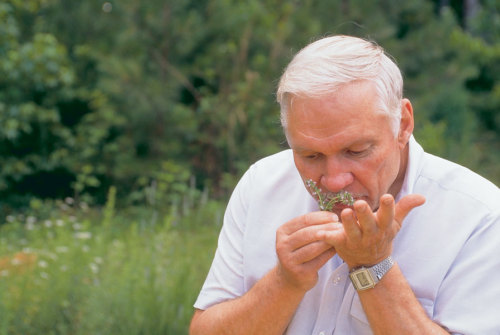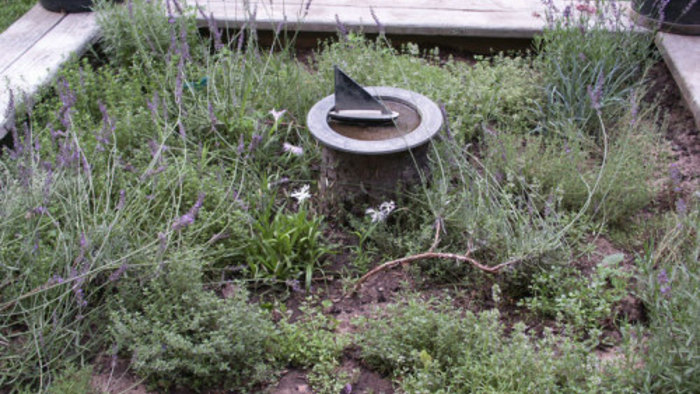
by Rexford H. Talbert
December 1996
from issue #6
I wash newly harvested thyme stems by swishing them in water and then gently blotting them dry in a dish towel. To strip the leaves off, I pull backwards along the firm lower part of the stem with my fingertips. At the end of the stem, where the tissue is soft and green and easily broken, I use both leaves and stem.
Thyme leaves release their essential oils most readily into fats, so butter and oil are good vehicles for thyme’s flavor. An herb butter made by blending chopped leaves into softened butter is also a good way to preserve the harvest for use during winter. You can make it up and then freeze it in a log shape or in small portions to rub on poultry before roasting, to thicken sauces, or simply to spread on bread and eat. I also like to make a blend of olive oil, oregano-scented thyme, and garlic. This concoction is delicious brushed on pita or bread and then grilled or heated in the oven.
Of course, you don’t have to use fats to enjoy thyme’s flavor. It works very well in a sherry and soy marinade for Grilled Tuna with Thyme. I also like to infuse cider vinegar with caraway thyme. I fill a clean bottle one third full of thyme stems, add a clove of garlic, and then fill with vinegar. After a few weeks in a dark cupboard, the vinegar can be strained and rebottled. I use it on cooked greens and to add flavor to homemade mayonnaise. I’ve stipulated the varieties of thyme I like in these recipes, but really any of the culinary thymes would work. Also, feel free to increase or decrease the amount of thyme to your taste.

















Comments
Log in or create an account to post a comment.
Sign up Log in